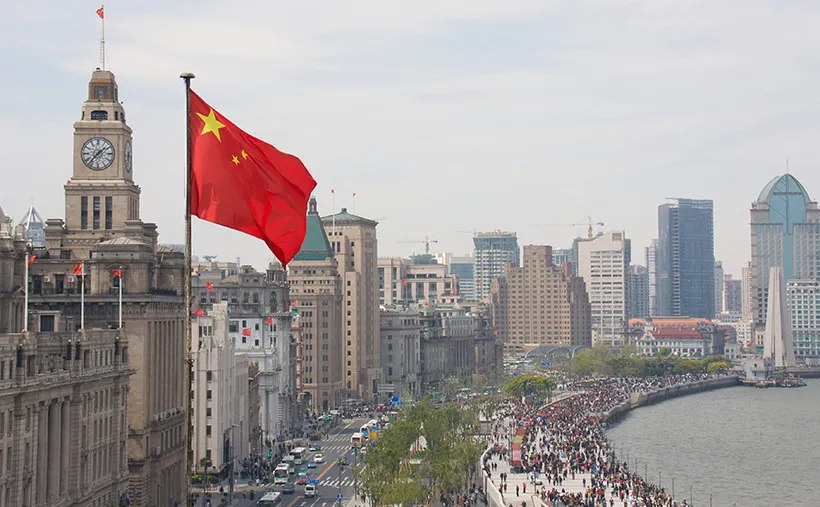Demand for export credit guarantees emerging in trade with China – understanding the underlying reasons may improve export companies’ prospects

China is firmly at centre stage in world politics and the world economy as well as an important export destination for Finland. However, this is hardly reflected in the demand for export credit guarantees thus far. Now the demand for export credit guarantees on the Chinese market has started to grow. Understanding the situation may improve Finnish export companies’ prospects of succeeding in the Chinese market. For this reason, Finnvera will be sending a representative to investigate the underlying reasons.
“Finnvera is, first and foremost, a demand-driven organisation, and we have noticed that a change is taking place as demand for export credit guarantees is emerging in China. The underlying reasons must be understood better,” says Mika Relander, Finnvera’s Regional Manager responsible for China.
The volume of export credit guarantees has increased from EUR 3 million in 2017 to EUR 93 million in 2018. The change can be seen most clearly in the wood processing sector. In addition to the significant relative growth in the volume, another evident trend is the fact that repayment periods have become clearly longer. Previously, financing was mainly for short repayment periods, whereas last year the majority of the arrangements were Buyer Credit Guarantees with long repayment periods. The covered target is also moving from bank risk to enterprise risk. However, considering the size of the Chinese market, the demand for export credit guarantees is still very moderate.
Finnvera suspects that the underlying reasons are especially associated with changes in China’s internal financing market.
As a specialised financing company owned by the State of Finland, it is Finnvera’s task to promote the operations of Finnish export companies in destination countries. To this end, Relander leaves at the beginning of March for a three-month posting in China to investigate the background factors explaining the increasing demand for guarantees.
A lot of exports, few export credit guarantees
Exports of goods from Finland to China has doubled during the past 15 years. In 2017, China shared fifth position with Russia on the list of Finland’s most important export destinations, after Germany, Sweden, the Netherlands and the USA.
Considering this, it is slightly surprising that China is not among the top 10 countries for Finnvera’s export credit guarantees. The largest countries in 2018 were the USA, Germany, Brazil and Russia.
“China’s position as Finland’s fifth largest export destination has been barely visible at Finnvera: we clearly have not been needed in exports,” says Jussi Haarasilta, Executive Vice President at Finnvera.
In 2017, only approximately EUR 3 million was granted in export financing through Finnvera, and the volume has been very low before this, too.
According to Haarasilta, the reasons for the earlier weak demand for export credit guarantees in trade with China can be found in China’s internal financing market. Traditionally, short-term credit has been preferred in China and it has been easily available from local banks.
The demand for export credit guarantees in China has been weak also on a global level.
The statistics of the international association of credit and political risk insurers, the Berne Union, show that, in 2017, medium-term and long-term financing arrangements amounting to approximately USD 3 billion were made in China through the Berne Union member agencies. For the USA, the corresponding figure was more than USD 20 billion and, when it comes to the Asian countries, China is between Indonesia and Bangladesh. India’s share is approximately five times that of China.
The change of China’s financing market as a background factor
Mika Relander sees primarily three potential reasons for the increasing demand for export credit guarantees in China.
“It might be a wish stemming from the Chinese central leadership to spread risk by teaching Chinese operators to use western financing. On the other hand, if the availability of financing is declining in China, the Chinese must increasingly turn to international financing. The desire of banks involved in export financing to use export credit agencies as partners might also be an indicator of China’s increasing risk. At the same time, Chinese banks are also clearly more willing to increase their knowledge and experience with regard to western export credit agencies.”
“It has been evident that China’s traditional risk-taking policy has become somewhat stricter, which may be due to an increase in credit losses,” Relander goes on to say.
The stronger presence of export credit agencies in China’s financing market may also contribute to the promotion of environmental and human rights issues. Anu-Leena Koskelainen, team leader for country and environmental risk research at Finnvera, says that, from the point of view of a Chinese buyer, credit granted by Finnvera often means a commitment to stricter regulation.
“When Finnvera grants credit to a Chinese enterprise, matters related to corporate responsibility are taken into account as part of the risk assessment. If deficiencies are detected, the requirement to rectify these is included in credit terms and conditions and its realisation is monitored,” describes Koskelainen.
Relander believes that the Chinese are motivated to approach closer to the international financing system and rules as they benefit from this themselves and it is part of the Chinese learning process.
The agenda consists of stronger relations and a deeper understanding of local circumstances
The agenda for Relander’s posting in China includes the strengthening of relations with China and different parties operating there. As the demand for export credit guarantees is growing in China, Finnvera wishes to build closer cooperation and a deeper understanding of the target market.
In the background, there are also more far-reaching goals associated with the promotion of trade relations between Finland and China, in cooperation with the Ministry for Foreign Affairs and Business Finland.
“The most important task during my posting is to meet with Finnish enterprises and their Chinese clients. The key thing is that Finnvera acquires a better understanding of the needs of Chinese buyers, the business environment and the dynamics and operators in China’s financing market,” says Relander.
Other goals include fine-tuning the Team Finland cooperation and providing the local Team Finnvera organisation with training on Finnvera’s operations. In addition, it is important to find out whether the increasing demand creates a need for Finnvera’s permanent presence in China.
A broader background agenda includes the growth of China’s geopolitical role and the understanding of its impacts from China’s point of view.
During the next three months, Relander will have many meetings with Finnish enterprises, potential Chinese buyers, authorities, banks, other operators in the financial sector, and representatives of Team Finland. Relander will report on the results of his posting after returning to Finland in the summer.
It is known that China’s own export credit guarantee operators are not committed to the minimum terms and conditions set by the OECD but act by their own rules. By offering better credit terms to Chinese enterprises China creates global competitive advantage in comparison to other countries.
”In practice, this may mean that Finnvera’s Finnish clients, i. e. the Finnish exporters, may fail to close deals when China offers more flexible terms to Chinese enterprises”, Jussi Haarasilta says.
According to Mika Relander the differences may not always be as big as it seems.
”It may be, that in a competition between a Finnish and a Chinese enterprise the terms of financing in reality are not completely different – it is just that China’s operations are not as transparent as ours”, he says.
Further information:
Finnvera's Export Credit Guarantee operations
Read also: A mammoth market awaits in South-East Asia - exports to Indonesia are increasing
